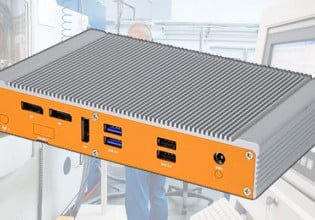The MAX System, Cloud Computing, and IT: an Interview with A&E Engineering
Recently, our Control.com staff got a chance to chat with the software team at A&E Engineering, Inc., for an interview to discuss the MAX system and learn behind the scenes about how a cloud approach to data analysis is a powerful tool for manufacturing and processing facilities.

According to A&E Engineering, cloud computing can prove a far more powerful means of consolidating and analyzing automation data than many realize. Image used courtesy of Pixabay
A&E Engineering is an industrial automation company headquartered in Greer, South Carolina. As an integrator company, their goal is to bring together subsystems such as automation, cloud analytics, industrial networking, and cybersecurity to engineer effective, integrated automation solutions for their customers.
A&E Engineering serves diverse industry sectors, including food & beverage, chemical processing, pharmaceuticals, and automotive. Their current emphasis, however, is discrete manufacturing in the automotive industry.
A&E MAX System
“You must drive innovation using logical, reasonable, well thought-out data,” said Chris Gibson, Software Team Leader for the MAX project. However, there is often a disconnect between the data being gathered and its presentation in an information format that can be quickly interpreted by those responsible for decision marking. The goal of the A&E MAX system is to collect data from the components of the automation system and send it to computation engines with algorithms that provide users with the reliable information they need to understand what is going on at the shop floor level to make fully informed decisions.
“MAX connects everything from the shop floor up to the cloud,” according to Gibson. A&E has partnered with Telit to link MAX to the control system via an ingest layer using the Telit deviceWISE platform at the lowest shop floor level. This platform is a device connector and edge logic service whose job is to collect data from IIoT (Industrial Internet of Things) devices and make it available in the cloud.

A sample A&E Max user interface provides customized data analysis and prediction capabilities using AWS cloud capabilities. Image provided courtesy of A&E Engineering
More specifically, the data goes to AWS, or Amazon Web Services, with whom A&E has partnered. As Gibson explains it, “We've embraced the AWS serverless stack, and we are piecing together that stack in meaningful ways that are easy to support by the clients and scalable, making solutions for the end customer with the full AWS stack.”
The data is processed using AWS tools that make it available to end-users through information-rich dashboards. The GUI (graphical user interface) connects the factory to the tools and data storage provided by AWS.
Another important aspect of A&E MAX lies in the design of its GUI and dashboard: aesthetics is an essential factor of the design so that it does not look “dirty”, as is often the stereotype for shop floor work - even data interfaces.
There are several benefits to companies that adopt the MAX system, starting with the availability of helpful data metrics combined with predictions and trends from AI (artificial intelligence). In addition, the results available through the dashboard are not merely current data or trending with numbers but can serve as an advisory feature providing AI advice for future improvements.
Eventually, a chat option (much like Amazon Alexa) will be added to MAX, allowing users to interact using voice commands to ask questions. Finally, MAX uses a modular approach from the ground up so that updates and additions can be selectively applied. When changes or additions to the system must be made, they do not impact current operations.
Benefits of a Cloud Approach
MAX does use a cloud approach, which provides much more security and reliability than most in-house IT systems -- especially when industry-best AWS approaches are implemented.

A cloud approach to automation and cloud computing requires buy-in from the IT department and the shop floor. Image used courtesy of Pixabay
One of the most important steps in advancing cloud integration is developing communication between departments, which underlies one of the critical benefits of a cloud approach: people who know the plant can recommend changes, while the people who know the cloud can implement them.
Furthermore, according to Gibson, using the cloud approach for tests of new innovations and metrics means that users can “try and experiment with new processes and it doesn't break any physical resources. Delete it and try again.”
Conclusion
Gibson also provided some tips on encouraging people to embrace IoT development, starting with opening up more communication between IT and other teams. These separate teams, the people who know the factory and the people who know the cloud need to work together. From there, those on the shop floor should be educated on the benefits of cloud integration. At the same time, those in IT should be allowed to convince themselves about the security and reliability of the cloud. Finally, Gibson advises, “Get people thinking about this subject - what is actually possible? Get it into the hands of the users.”
For those interested in the A&E MAX system, early adopter rollouts have started. The A&E team can be reached through their contact page.






